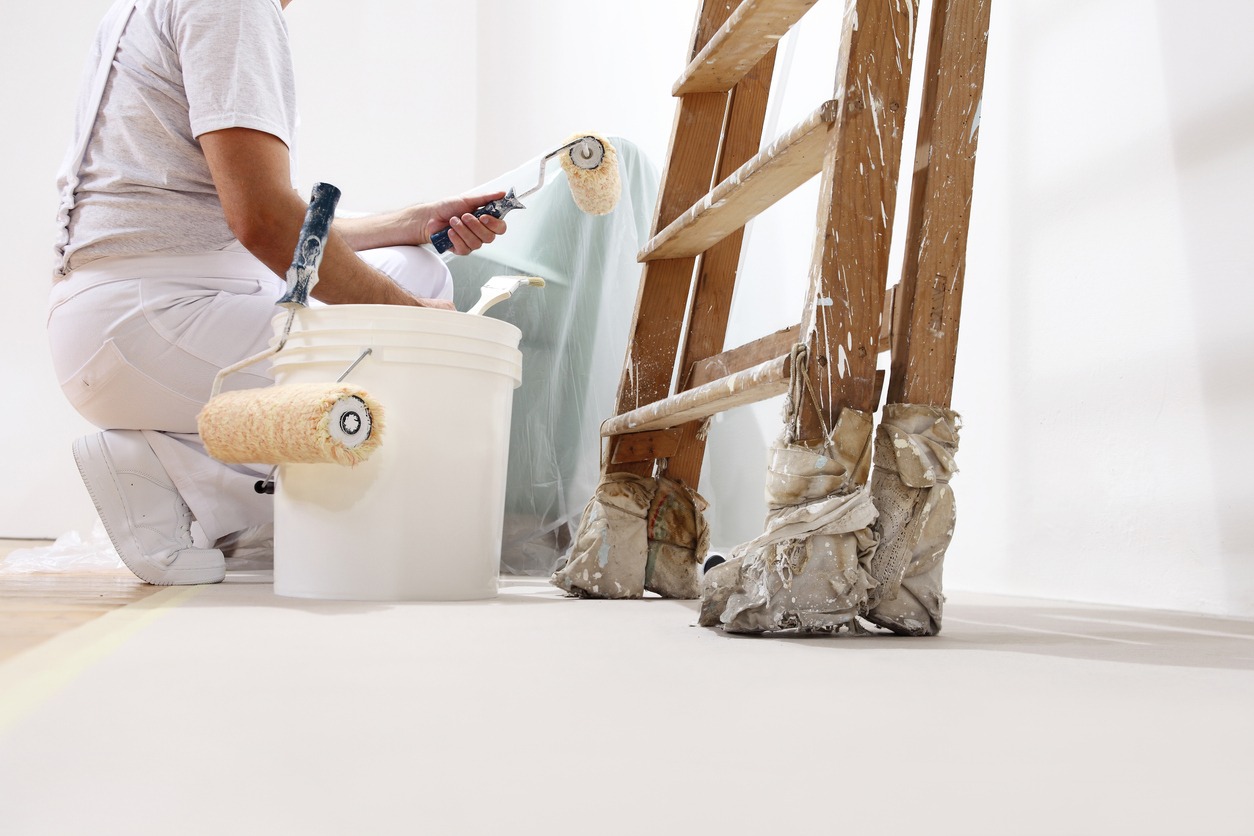Painting a room can be a great way to refresh your home’s interior and give it a new look. While it might seem like a straightforward task, there are steps you can take to ensure a professional finish. This article will guide you through the process of painting a room, from preparing the space to applying the final coat.
How Can Paint Improve the Appearance of a Room?
Paint can dramatically improve the appearance of a room, enhancing its overall look and feel. Here are some ways paint can make a difference:
- Brightens the Space: Light-colored paint can make a room feel brighter and more open, even if natural light is limited.
- Adds Personality: Different colors can reflect your personal style and set the mood of the room. Bold colors can make a statement, while neutral tones create a calming environment.
- Covers Imperfections: A fresh coat of paint can hide minor imperfections on walls, such as small cracks, stains, or blemishes, giving the room a clean, polished look.
- Creates Depth: Using different shades of the same color or combining complementary colors can add depth and dimension to a room, making it more visually interesting.
- Enhances Features: Paint can highlight architectural features like trim, molding, and built-in shelves. Contrasting colors can draw attention to these details, making them stand out.
- Updates Style: A new paint color can instantly update the style of a room, making it feel more modern and current.
- Defines Spaces: Different colors can be used to define areas within a room, such as an accent wall to create a focal point or different shades to separate functional areas in an open-plan space.
How to Choose the Best Colors for a Room

Choosing the right colors for a room can greatly impact its atmosphere and overall appeal. Here are some tips to help you select the best colors for your space:
- Consider the Room’s Purpose: Think about how the room will be used. Soft, calming colors are ideal for bedrooms, while vibrant and energetic colors work well in living rooms or playrooms.
- Evaluate Natural Light: Take note of the room’s natural light. Rooms with lots of sunlight can handle darker colors, while rooms with limited natural light benefit from lighter shades to brighten the space.
- Match with Existing Décor: Consider the colors of your furniture, flooring, and accessories. Choose paint colors that complement these elements to create a cohesive look.
- Use Color Psychology: Different colors can evoke various emotions. Blues and greens are calming, yellows are cheerful, and reds can be energizing. Choose colors that match the mood you want to create.
- Test Paint Samples: Before making a final decision, test paint samples on the walls. Observe how the colors look at different times of the day and under various lighting conditions.
- Consider the Size of the Room: Light colors can make a small room feel larger and more open, while dark colors can add coziness and warmth to a large space.
- Think About the Flow: Ensure the color you choose works well with the adjoining rooms. This creates a harmonious flow throughout your home.
- Follow Trends Sparingly: While it’s fun to incorporate trendy colors, choose timeless shades for larger areas. Use trendy colors as accents to keep the room stylish without frequent repaints.
Tips for Painting a Room

Here are some tips to help you achieve the best results when it comes to painting a room:
Prepare the Room
Clear the room of furniture and cover the floor with drop cloths. Remove any fixtures or switch plates. This will make the painting process easier and prevent accidental spills and splatters.
Clean the Walls
Dirt and dust can affect the paint’s adhesion. Wipe down the walls with a damp cloth or a mild detergent solution. Make sure the walls are dry before you start painting.
Repair Imperfections
Fill any holes or cracks with spackling compound and sand them smooth. This creates a smooth surface for the paint and ensures a professional finish.
Use Painter’s Tape
Apply painter’s tape to trim, baseboards, and any other areas you want to protect. This helps create clean, sharp lines and prevents paint from getting on surfaces you don’t want to paint.
Prime the Walls
Using a primer helps the paint adhere better and provides a uniform base, especially if you are painting over dark colors or new drywall. This step is essential for a lasting finish.
Mix the Paint
Thoroughly mix the paint before you start. This ensures the color is consistent throughout the room. Pour the paint into a tray for easy access while you work.
Use the Right Tools
High-quality brushes and rollers make a big difference in the final result. Use a brush for edges and corners and a roller for larger surfaces. This helps you achieve an even coat.
Paint from Top to Bottom
Start painting at the top of the wall and work your way down. This helps prevent drips and ensures a smoother finish. Apply the paint using long, even strokes.
Apply Multiple Coats
Apply at least two coats of paint for the best coverage and durability. Allow each coat to dry completely before applying the next one. This results in a richer, more uniform color.
Clean Up Properly
Remove the painter’s tape before the paint fully dries to avoid peeling. Clean your brushes and rollers immediately after use. Proper cleanup extends the life of your tools and keeps your workspace tidy.
Conclusion
Painting a room can be a simple yet effective way to refresh your home’s interior. You can achieve a professional-looking finish by following the right steps, from preparing the room to applying the paint. Remember to take your time with each step to ensure the best results.
For professional assistance with your painting projects, contact Custom Painting, Inc. Call us at 925-294-8062 or fill out our contact form for more information.

